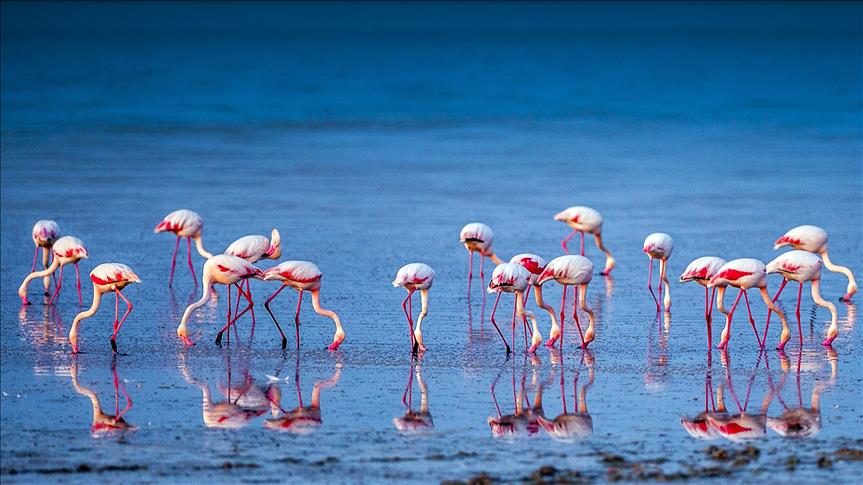
Kenya Flamingos
Kenya Flamingos
Discovering Kenya’s Flamingos: A Spectacle of Color and Nature
Kenya, a land of breathtaking landscapes and unrivaled biodiversity, is home to one of the most spectacular avian phenomena on Earth — the mass congregation of flamingos. These elegant, pink-hued birds flock to the alkaline lakes of the Great Rift Valley, transforming the waters into a shimmering sea of pink. This article delves deep into the world of Kenya’s flamingos, exploring their habitats, behaviors, conservation efforts, and the best ways to witness this natural wonder.
Introduction to Kenya’s Flamingos
Kenya’s flamingos are among the most iconic wildlife attractions in East Africa. These birds are not only admired for their beauty but also for the ecological significance they hold. The alkaline lakes of Kenya provide the perfect breeding and feeding grounds for these birds, making the country a prime destination for bird watchers and nature lovers.
The two main species found in Kenya are the lesser flamingo (Phoeniconaias minor) and the greater flamingo (Phoenicopterus roseus), each with distinct characteristics and behaviors.
Types of Flamingos Found in Kenya
Lesser Flamingo
- Smaller in size
- Deep pink coloration
- Feeds primarily on blue-green algae
- Found in large flocks
Greater Flamingo
- Taller and paler
- Has a more varied diet including small invertebrates
- Less numerous than lesser flamingos
These birds are often seen together, creating a mesmerizing contrast of shades and sizes.
Best Places to See Flamingos in Kenya
Kenya’s Great Rift Valley is dotted with alkaline lakes that serve as the primary habitats for flamingos. Some of the best spots include:
- Lake Nakuru – Once the most famous flamingo destination, though numbers have declined due to rising water levels.
- Lake Bogoria – Currently the best place to see massive flocks of lesser flamingos.
- Lake Elmenteita – A quieter, less crowded location with a growing flamingo population.
- Lake Magadi – Known for its hot springs and unique flamingo sightings.
- Lake Turkana – The largest desert lake in the world, also home to flamingos and other bird species. Learn more at Turkana Wildlife Safaris.
The Great Rift Valley Lakes
These lakes are highly alkaline, creating an ideal environment for the growth of cyanobacteria — the primary food source for flamingos. Each lake has its own unique ecosystem:
- Lake Bogoria: Famous for geysers and hot springs, attracting millions of flamingos.
- Lake Nakuru: Surrounded by Lake Nakuru National Park, offering a chance to see both flamingos and big game.
- Lake Elmenteita: A UNESCO World Heritage Site and part of the Kenya Lake System.
Flamingo Migration Patterns
Flamingos are known for their nomadic behavior, moving between lakes in search of optimal feeding and breeding conditions. Their movements are influenced by:
- Water levels
- Alkalinity
- Food availability
- Breeding season
During dry seasons, flamingos may migrate to less saline lakes or even cross borders into Tanzania or Ethiopia.
Feeding Habits and Diet
Flamingos feed by filtering water through their specialized beaks. Their diet includes:
- Cyanobacteria (blue-green algae)
- Diatoms
- Small crustaceans
- Insects (for greater flamingos)
Their pink coloration comes from carotenoid pigments found in their food, particularly the algae and shrimp.
Breeding and Nesting
Flamingos breed in large colonies, often on isolated islands or mudflats. Key breeding behaviors include:
- Building cone-shaped mud nests
- Laying a single egg
- Both parents incubating the egg
- Chicks forming crèches (nurseries) after hatching
Lake Natron in Tanzania is a major breeding site, but Kenyan lakes like Bogoria and Elmenteita also support nesting.
Conservation Challenges and Efforts
Despite their beauty, flamingos face numerous threats:
- Habitat loss due to rising water levels and pollution
- Industrial activities near lakes
- Climate change affecting water chemistry
- Human disturbance and tourism pressure
Conservation Initiatives
- Protected Areas: Many flamingo habitats are within national parks and reserves.
- Community Engagement: Local communities are involved in conservation through ecotourism.
- Research and Monitoring: Organizations like the Kenya Wildlife Service conduct regular surveys.
- Eco-friendly Safaris: Promoted by operators like Turkana Wildlife Safaris.
Ecotourism and Flamingo Safaris
Ecotourism plays a vital role in flamingo conservation. Responsible travel not only supports local economies but also funds conservation efforts.
Benefits of Ecotourism:
- Raises awareness about flamingo habitats
- Provides income to local communities
- Encourages sustainable tourism practices
- Supports conservation projects
Top Flamingo Safari Packages
How to Plan a Flamingo Safari in Kenya
Planning a flamingo safari requires attention to timing, location, and sustainability. Here’s how to get started:
Best Time to Visit
- Dry Season (June–October): Ideal for wildlife viewing and photography.
- Wet Season (November–May): Best for birdwatching, including flamingos.
What to Pack
- Binoculars
- Camera with zoom lens
- Lightweight clothing
- Sunscreen and hat
- Reusable water bottle
Recommended Tour Operators
- Turkana Wildlife Safaris: Offers customized flamingo and birding safaris with expert guides.
FAQs About Flamingos in Kenya
1. When is the best time to see flamingos in Kenya?
The best time is during the dry season (June to October), when water levels are low and food is abundant. However, flamingos can be seen year-round at lakes like Bogoria and Elmenteita.
2. Why are flamingos pink?
Their pink color comes from carotenoids in their diet, primarily from algae and crustaceans. The more they eat, the pinker they become.
3. Are flamingos endangered?
Lesser flamingos are classified as “Near Threatened” due to habitat loss and pollution. Conservation efforts are ongoing to protect their habitats.
4. Can I photograph flamingos up close?
Yes, but it’s important to maintain a respectful distance. Use a zoom lens and follow ethical wildlife photography guidelines.
5. How can I support flamingo conservation?
You can support by booking eco-friendly safaris, donating to conservation organizations, and spreading awareness. Consider traveling with Turkana Wildlife Safaris for responsible tourism.
Conclusion
Kenya’s flamingos are a testament to the country’s rich biodiversity and natural beauty. From the shimmering shores of Lake Bogoria to the remote waters of Lake Turkana, these birds offer a visual feast and a reminder of the delicate balance of ecosystems. By supporting conservation and choosing sustainable travel options like those offered by Turkana Wildlife Safaris, you can help ensure that future generations will also witness this incredible spectacle.
Whether you’re a seasoned birder or a curious traveler, a flamingo safari in Kenya is an unforgettable experience that combines adventure, education, and awe-inspiring beauty.
For more information on planning your flamingo safari, visit Turkana Wildlife Safaris and explore their wide range of eco-tourism packages tailored for wildlife enthusiasts.
